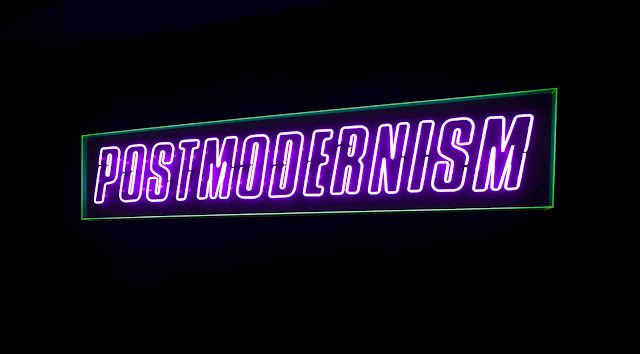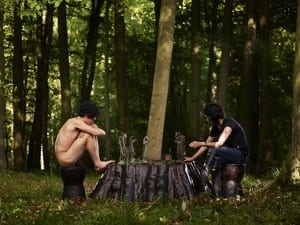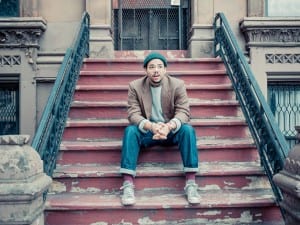Text by Emily Sack
“Why can’t we be ourselves like we were yesterday?” ask New Order in their song Bizarre Love Triangle (1986). The Victoria & Albert Museum’s new special exhibition Postmodernism: Style & Subversion 1970-1990 explores the recent past in design with two decades of hindsight. For many, the 1970s and 1980s are not too distant phases of his or her lifetime making this exhibition a retrospective of their youth, whereas for others, this exhibition highlights aspects of a period only recalled through history.
Perhaps the most asked and debated question for students of art, design and visual culture, among other fields, is: what is postmodernism? This query is not a simple one and the V&A exhibition hopes to shed light on significant aspects of postmodernism. As a walk through the gallery clearly elucidates, there is not a single set of aesthetics that defines postmodernism, but rather it is a way of conceptualizing the world as it is. Reacting against High Modernism, architects and designers of the early 1970s questioned the radical idealism inherent in the movement. Whereas modernists championed universal solutions to social problems, the early practitioners of postmodernism explored color, material and taste in ways never seen before.
The exhibition is follows a roughly chronological thematic approach with sections entitled: Presence of the Past, Apocalypse Then, New Wave, Money and Postmodernism Redux. Upon entering the exhibition, it is apparent that the galleries themselves have been transformed into works of art and that the V&A created a postmodern experience in which visitors can become immersed in the style. Large-scale reconstructions supplement the models and architectural drawings in the gallery devoted to architecture. Other parts of the gallery resemble department stores (albeit for an elite clientele) with groupings of like objects such as coffee and tea sets, lamps, chairs and jewelry. Examining such objects with similar purpose together highlights the vast array of design techniques and styles used by the various designers.
The beginning of the exhibition examines the state of the world and the postmodern response with a strong focus on architecture. The rebuilding of Hans Hollein’s façade from the Strada Novissima from the Venice Architecture Biennale of 1980 chronicles the history of architecture through individual columns. Each column represents a different period and style of architecture and by placing them together and fracturing on to create a passageway, Hollein demonstrates the revival of historicism in the postmodern sense. It was no longer necessary for artists to replicate former styles to create “neo” movements, but as Philip Johnson demonstrated with the AT&T building in New York (1984), elements of previous design can be reincorporated in a contemporary manner.
A survey of postmodernism would be incomplete without significant reference to music and club culture. Such icons as Laurie Anderson, Grace Jones, Klaus Nomi and David Byrne are featured with large-scale audio-video installations. The gallery itself resembles a gritty, underground club complete with chain link fence partitions and pulsating lights. The creativity of Jean-Paul Goude in the Maternity Dress for Grace Jones (1979), Leigh Bowery in the many costumes created for the Michael Clark Dance Company, or Boy George in the London club culture, inspired a sense of individuality and freedom of self.
The last section focuses on the reaction against the consumer culture of the 1980s. The booming economy of the decade encouraged spending which ultimately leads to the desire to buy bigger and better products. One entire wall is a photographic representation of Jenny Holzer’s iconic video projection from the Survival Series, Protect Me From What I Want (1985-86). This image contrasts the busy capitalist associations of New York with a self-aware plea against the superficiality of consumerism. Alessandro Mendini, one of the exhibition’s key practitioners, capitalized on the notion of designer clothing and branding by creating a suit with Kean Etro, called Designer’s Suit, that is completely covered in logos and brand names.
Closing the show is Robert Longo’s Untitled (Joe) (1981) – an ambiguous charcoal and pencil on paper image of a man in a black suit contorted in an unreadable action. The image can be read as whimsical or morbid, and the uncertainty reflects the debated end of postmodernism. Is postmodernism still alive and dancing through contemporary culture, or has it died with the 1990s leaving us in another uncertain time?
Postmodernism: Style & Subversion 1970-1990 continues until 8 January 2012.
Aesthetica Magazine
We hope you enjoy reading the Aesthetica Blog, if you want to explore more of the best in contemporary arts and culture you should read us in print too. You can buy it today by calling +44(0)1904 479 168. Even better, subscribe to Aesthetica and save 20%. Go on, enjoy!
Image:
Postmodernism: Style and Subversion 1970-1990
2011
© V&A Images





